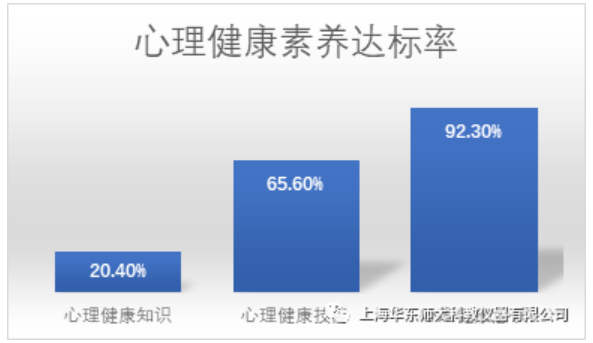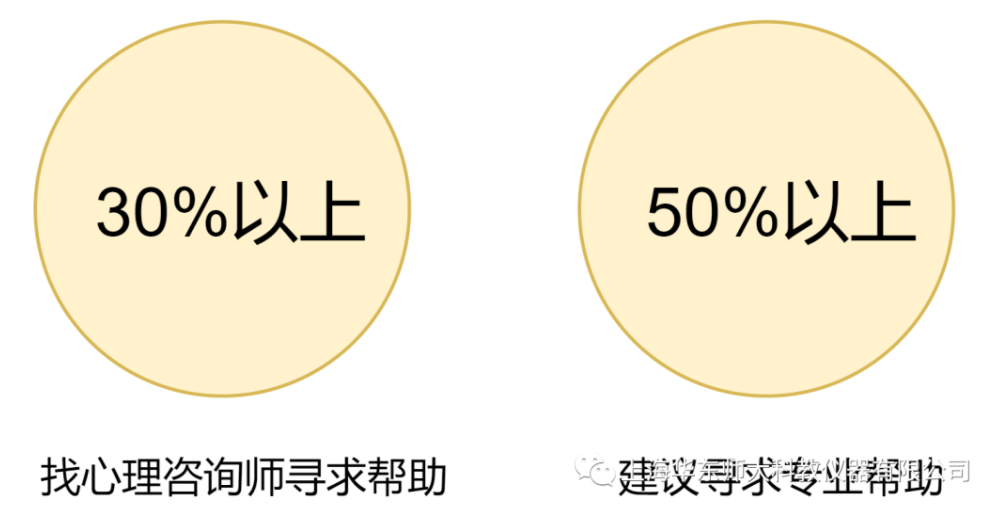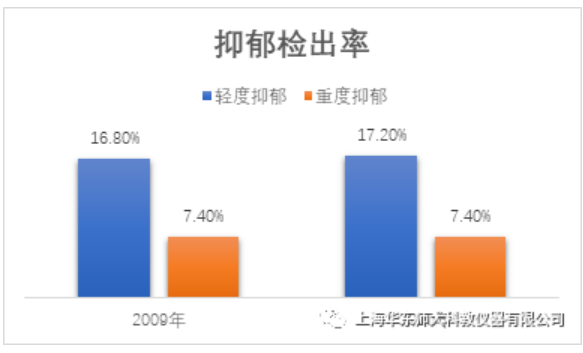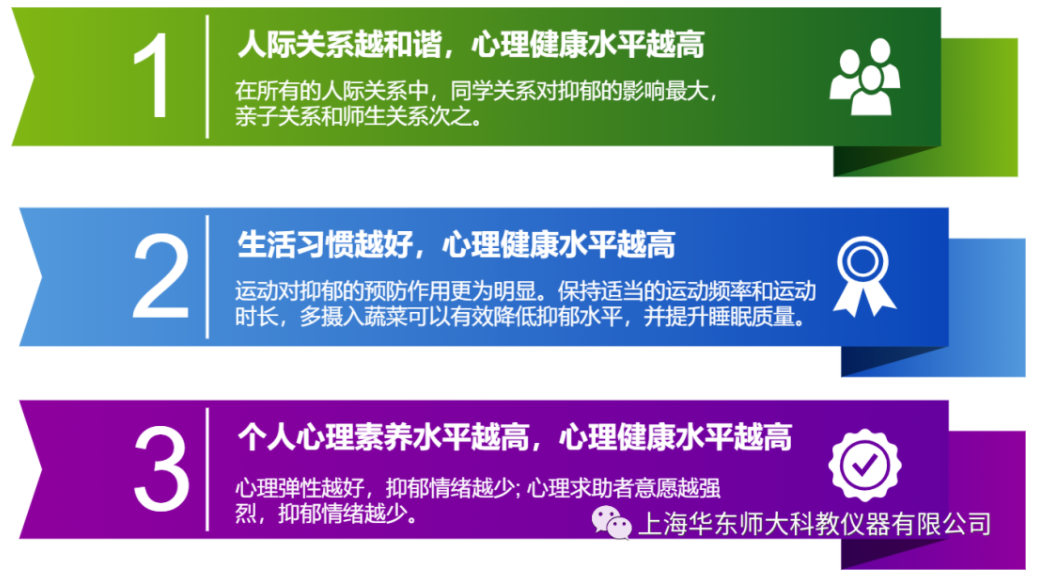The National Mental Health Blue Book Released: Only 14.24% of Adolescents meet the standards of mental health literacy, and 24.6% are depressed
In December 2019, 12 departments, including the National Health Commission and the Propaganda Department of the CPC Central Committee, jointly issued the Healthy China Action Plan on Children and Adolescents' Mental Health (2019-2022), which proposed that by the end of 2022, schools at all levels and of all types should establish psychological service platforms or provide students' mental health services by relying on school doctors and other personnel. Pre-school education and special education institutions shall have full-time and part-time teachers for mental health education; The awareness rate of mental health core knowledge of children and adolescents should reach 80 percent.
I. Status quo of mental health literacy of Chinese adolescents in 2020
In 2020, the Institute of Psychology of the Chinese Academy of Sciences carried out an online survey on adolescents aged 10 to 19 with the National Mental Health Quality Questionnaire (short version). The survey subjects were mainly junior high school students and high school students, covering 29 provinces (autonomous regions and municipalities directly under the Central government) including Shandong and Hebei, and 29,045 valid questionnaires were collected.

When they have psychological problems, more than 30% of teenagers will seek help from psychological counselors, and when family or friends have psychological problems, more than 50% of teenagers will suggest seeking professional help.

Specific analysis found that there were significant group differences in mental health literacy.
In terms of mental health knowledge score: girls > A boy; The town. The countryside. The score increases with age and age.
In the aspect of professional psychological help attitude: with the increase of age, the enthusiasm of professional psychological help attitude gradually weakened; Students in Grade one were more willing to ask for help, and students in grade three were the least active.
The more harmonious the relationship between parents and the better the family economic condition, the more positive the professional psychological help attitude of teenagers.
2. Interannual evolution of adolescent mental health status in 2009 and 2020
The Interannual Evolution of Adolescent mental health Status Report 2009 and 2020 was conducted through an online survey of 15,846 adolescents, mostly from Henan, Hebei and Guangdong provinces, between April 23, 2020 and July 22, 2020. After excluding invalid questionnaires, 15280 valid questionnaires were obtained, with an effective rate of 96. 43%. Among them, 7878 were male students, accounting for 51.6%; There are 1,402 female students, accounting for 48.4% of the total. The grade distribution is from Grade 4 to Grade 3 in high school.
This report uses cross-sectional data analysis to examine the evolution of depression and sleep status in adolescents over a decade. The results found that the rate of depression detection among adolescents remained flat. Sleep deprivation continued to worsen, with 95.5 percent of elementary school students, 90.8 percent of middle school students and 84.1 percent of high school students getting less than the required amount of sleep.
(1)The phenomenon of sleep deprivation is becoming more and more serious
Sleep deprivation among teenagers is still evident. The amount of sleep teenagers get in 2020 is down across all school years compared to more than a decade ago.

The analysis by school segment found that 95.5% of primary school students sleep less than 10 hours, with an average sleep duration of 8.7 hours; 90.8% of middle school students sleep less than 9 hours, with an average sleep duration of 7.6 hours; 84.1% of high school students slept less than eight hours, with an average sleep duration of 1.2 hours.

(2) The detection rate of depression is similar to that of more than ten years ago
In 2020, the detection rate of depression among adolescents was similar to that before 2009, with 17.2 percent having mild depression, slightly higher than in 2009, 0.4 percentage points higher; Major depression was 7.4 percent, about the same as in 2009.

The proportion of girls with mild depression was 18.9%, 3.1 percentage points higher than that of boys, and the proportion of girls with severe depression was 9.0%, 3. 2 percentage points higher than that of boys.
The proportion of mild depression in non-singleton adolescents was 17.3%, which was similar to that of singleton adolescents. The rate of major depression was 7.7 percent, 1.4 percentage points higher than that of singlechild adolescents.
With the increase of grade, the detection rate of depression showed an increasing trend. The detection rate of depression in primary school is about 10%, and the detection rate of major depression is 1.9% ~ 3.3%. The detection rate of depression in junior middle school is about 30%, and the detection rate of major depression is 7.6%~8.6%. The detection rate of depression in high school is nearly 40%, among which the detection rate of severe depression is 10.9% ~ 12.6%.
3. Influencing factors of adolescent mental health

4. Countermeasures and suggestions
Aim to eat well, sleep well and exercise well, and cultivate healthy living habits in an all-round way
Increase the intake of vegetables and fruits for teenagers. It is recommended that families and schools increase the proportion of vegetables in teenagers' diet, especially the proportion of dark vegetables, and encourage teenagers to eat more vegetables, and fruit can not replace vegetables, fruit juice can not replace fruit.
Extend the amount of sleep teens get on school days. Lack of sleep can lead to a host of cognitive, emotional and developmental problems. It is suggested that local education administrative departments earnestly promote the implementation of the policies of the Ministry of Education on reducing the burden, delaying the start time and nearby enrollment.
To increase the frequency of exercise, it is recommended that primary and secondary schools provide adequate physical education classes and ensure outdoor activities at least three times a week. In addition, students should be encouraged to go out of the classroom and actively respond to the Healthy China Action (2019-2030), which advocates that primary and secondary school students should be exposed to natural light for more than one hour every day. Slow walking, fast walking, and some stretching and stretching exercises can effectively improve their mood.
The combination of school, family, community and network can comprehensively improve the mental health status of adolescents
Schools should establish a comprehensive mental health prevention and intervention system. On the one hand, schools should improve the protection, help and intervention system for students with mental health risks, standardize the process and implement it to the specific person in charge. On the other hand, the relevant requirements of the Guide to Students' Mental Health Education should be effectively implemented, mental health education courses that meet students' needs should be set up and incorporated into daily teaching plans.
The state should establish a sound mental health prevention and treatment and intervention system. The improvement of teachers' mental health literacy has been included in the "national training plan" and local teacher training plans, and relevant knowledge training for teachers in various subjects and schools at all levels has been strengthened.
We should advocate the establishment of a joint prevention and treatment system among families, schools and communities. Community family education guidance and service centers should actively carry out mental health education for parents and children, improve parents' ability to prevent and identify children's psychological and behavioral problems, and create a good environment for collaborative education.



